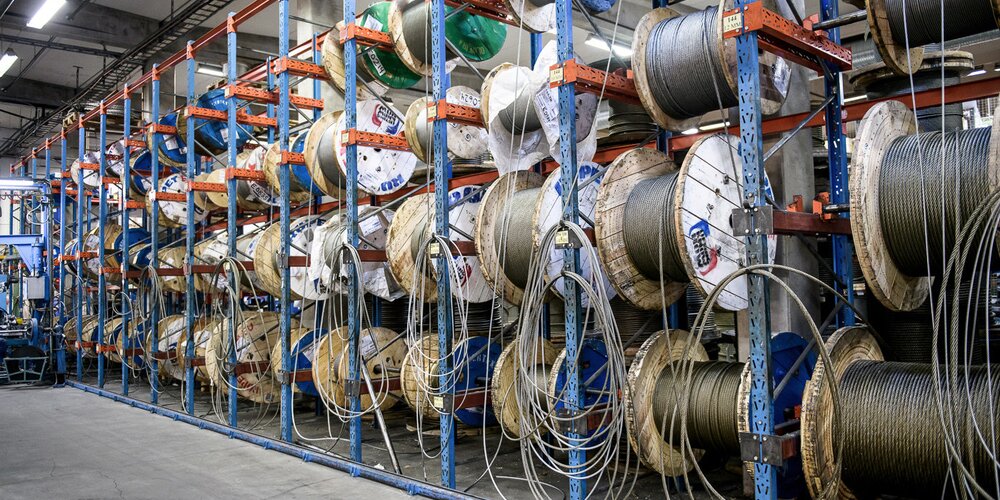
What steel wire rope construction do we choose?
Steel wire ropes: they come in all shapes and sizes. The right steel wire rope choice for you depends on the application. There are many aspects to consider, such as the construction, the number of strands, the ratio between inner and outer wires and the thickness of the wires. Yet in practice, I often see that the diameter and breaking load of the wire rope are the main focus. These are indeed important, but I strongly recommend: don’t focus solely on them. I’ll happily explain why.
The breaking load (also called: minimal breaking load (MBL) of a steel wire rope indicates the load at which the cable breaks or is allowed to break. The idea: you can move more weight with a high breaking load. This is true. But there are numerous other factors that influence the life span of a steel wire rope. These are partly dependent on use and application. Practice shows, for example, that 80% of wire ropes do not reach their maximum life span as a result of external influences (application and use). Destruction and fatigue are the determining factors here.
Breaking load, workload and usage rate
And there is more to consider. In addition to the breaking force, the workload and usage rate are also important. Whereas the breaking load indicates the load at which the wire rope may break, the workload (WLL) indicates the maximum load that a cable may undergo on an installation. The usage rate is the minimum breaking force divided by the maximum workload. With a usage rate of 10, the maximum allowable load is one-tenth the minimum breaking force of the steel wire rope. With an actual breaking load of a wire rope of 50 tons, the wire rope may be loaded with 5 tons when used. The usage rate thereby takes into account any unexpected circumstances regarding the steel wire rope.
A high breaking load says nothing about resistance to destruction and fatigue
It is therefore not wise to look solely at the breaking load. If you do, then it may be tempting to opt for an (expensive) special wire rope. These types of wire ropes usually have a very high breaking load. But the breaking load says nothing about the rope’s resistance to fatigue and destruction. In this context, I mean external influences such as damage, but also misuse.
Fatigue
The breaking load of a steel wire rope also says nothing about its resistance to fatigue. Fatigue occurs when a steel wire rope bends over sheaves and drums. As a result of wire rope fatigue, fatigue fractures occur in the individual wires. This results in rope breakage.
Destruction and fatigue
The illustration below is a schematic representation of the relationship between fatigue resistance and wear/destruction of a number of structures:
- An 8-strand rope with 41 strands in each wire totals 336 strands. This rope is very flexible. This gives the wire rope a high resistance to fatigue. But the wire rope is less resistant to abrasion and destruction.
- A 6-strand rope with 7 strands in each wire has a total of 42 strands. This wire rope is less flexible, but very durable. The wire rope has a high resistance to destruction.
How do you apply the steel wire rope?
These are just two examples. There are numerous other constructions imaginable, each with different properties that will resist your application. For example, there are steel wire ropes with a plastic encased core and compacted or hammered.
Therefore, always ask yourself the following questions: what am I going to use this wire rope for? How do I apply the steel wire rope? Will it run over sheaves, for example, and if so, how much? Which environmental factors will influence the rope? Will the steel wire rope come into contact with external influences and if so, which ones? Only then can you determine which wire rope performs best and is best suited to your situation. Of course, I can advise you on this topic. Please feel free to contact us for a meeting free of any obligations. Send an e-mail or call us at 020 58 11 811.




